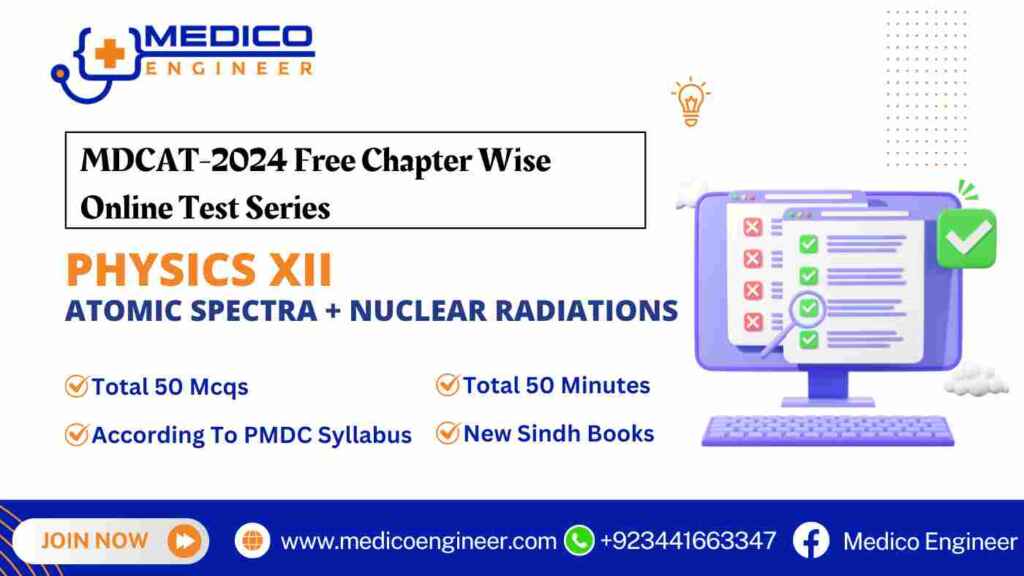
Advertisements
Instructions for Chapter Atomic Spectra and Nuclear Radiations Online Test Mdcat-2024:
- Most Important: Please wait for a few seconds after clicking the see results/ test submit button. Don’t double-click or refresh the page.
- Open in Chrome browser (recommended)
- Don’t refresh the page during the test
- This free online test will remain open for the whole mdcat session.
- Your score will be shown on the screen after you submit the test
- You can attempt the test anytime anywhere
- Test is According to PMDC MDCAT Syllabus and Sindh Textbooks
- Join our WhatsApp Group : Click here
- For Any Information Contact us at +923441663347
Advertisements
Test Details:
- Subject: Physics
- Class: 2nd year or 12
- Chapter name: Atomic Spectra and Nuclear Radiations
- Test: MDCAT 2024
- Book: Sindh Textbook
- Total No. Of MCQS: 50
- Time Allowed: 50 Minutes
- Price : Free
0%





